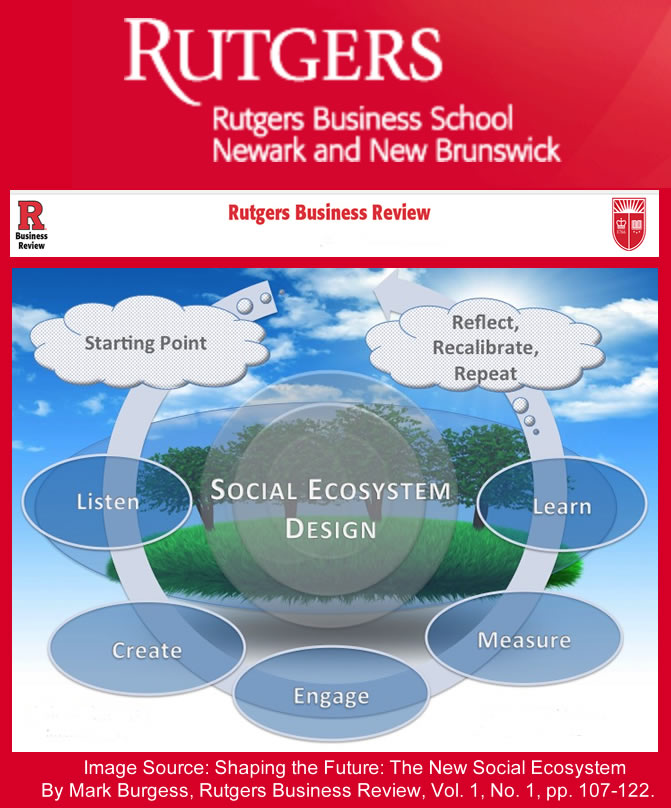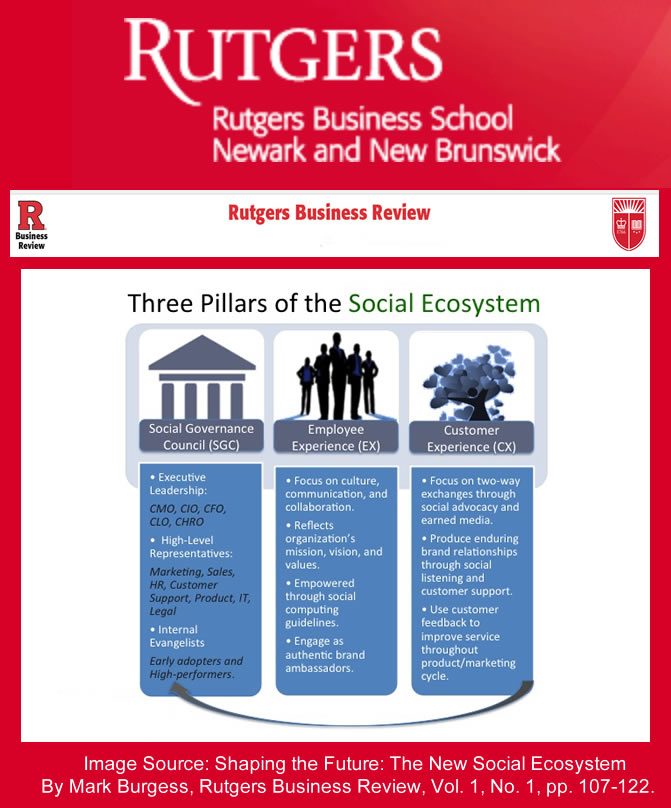Brands have no choice but to rethink their approach to social engagement in today’s digital bazaar. Brand engagement doesn’t begin at a brand’s front door, but rather it ignites behind its firewalls. One fascinating aspect of social business is its ability to fuse internal collaboration and communication together in order to make a company’s brand trajectory soar.
Social business is just getting started. With the rapid rise of social and collaborative technologies, businesses are just beginning to harness its power of influence. Whether you’re a small business or a large one, the size of your company doesn’t matter in the world of social media. Customer engagement is not driven by how many people you employ, but by how well those employees communicate your brand’s message.
To achieve this, employees must have strong management support for social business initiatives. In every organization, executives must establish a clear set of goals and objectives for their social branding campaigns. For businesses that want to take the leap into the world of social businesses, one of the most important goals they can set for themselves is to develop their ability to communicate more effectively and collaboratively across all departments. Internal communication is critical to successful branding, but many in the marketing world are still asking why this is so.
Why Does Social Business Matter to Branding?
Before a company can communicate externally, it must communicate internally. Just as ecommerce has fundamentally changed the nature of exchange in the marketplace, so too has social business transformed branding. As the world becomes more interconnected, brands that can successfully transform into social brands stand to reap great rewards by driving brand value. Internal and external collaboration produces a key benefit for businesses by allowing employees, customers and stakeholders to become co-creators of brand value.
According to David Armano in his piece for Edelman, “In order for a business to truly extract value from social initiatives, we must consider not only marketing but how it impacts research and development, human resources, innovation, business intelligence and other facets of an organization which help drive a business forward.” Adopting a social business policy affects every aspect of a company’s day-to-day operations, and its potential for bringing about dramatic changes should be weighed carefully.
Source: David Armano – Edelman 2011, edelmandigital.com
By Unleashing Your Employees, You Empower Your Brand
Today, a company’s employees stand along the front lines of branding. It’s taken a while for this revolutionary mentality to take root, but, now that it has, many forward-thinking businesses are asking how it could have ever been any other way. After all, who better to own the brand than the employee? Unfortunately, far too much untapped creative talent is going ignored simply because management doesn’t trust or value them. This tectonic shift demands that businesses invest in a higher level of trust in their employees. Just as consumers must trust a brand before making a purchase, businesses must fundamentally trust their employees before carrying their brand identities into the realm of social media.
In this way, trust is perhaps the most essential component to a social business’s success. Companies must exercise trust in their employees if they are to become brand champions who enthusiastically share both their knowledge and expertise with potential customers. Brands can only develop this trust by providing proper training and establishing specific guidelines. By unleashing your employees, you empower your brand.
Regardless of how many departments, managers, and employees a company has, a brand’s purpose must make the voices of the many resound as the voice of one. The social business must structure itself both internally and externally in order to present a unified front. Its customers will expect nothing less.
Are your employees your brand ambassadors? What are you doing to empower your workforce as brand champions?
This post was originally published on AT&T’s Networking Exchange Blog.















There is a great deal of pressure for organisations to embrace social media. But Go forth and #socialise without providing employees with this type of training is a recipe for some “unexpected” results.
A great post… managing social media requires resources that are not present in most organisations… #unexpectedresults coming soon.
Thanks
David
Love this conversation, though I disagree with uniting the voice. At Round Table Companies we’re a small organization of 18, but we encourage the unique voice of each of our employees. We currently have 50% of our employees contributing regularly to our blog, and they each contribute in their own voice, sharing what they are learning and feeling through their work from their own perspective. Since we started this program, visits to our website have tripled and engagement among our employees is growing rapidly. They read each others work (and comment on it), and they support each other. Through those experiences they are feeling a greater sense of being unified, of being part of something special that matters. And that encourages them to be brand ambassadors, to become mouth pieces for the company, without us having to ask them to.
So while I can understand the perceived value of a unified voice, you might consider the power of so may individual voices coming together to create an amazing harmony.